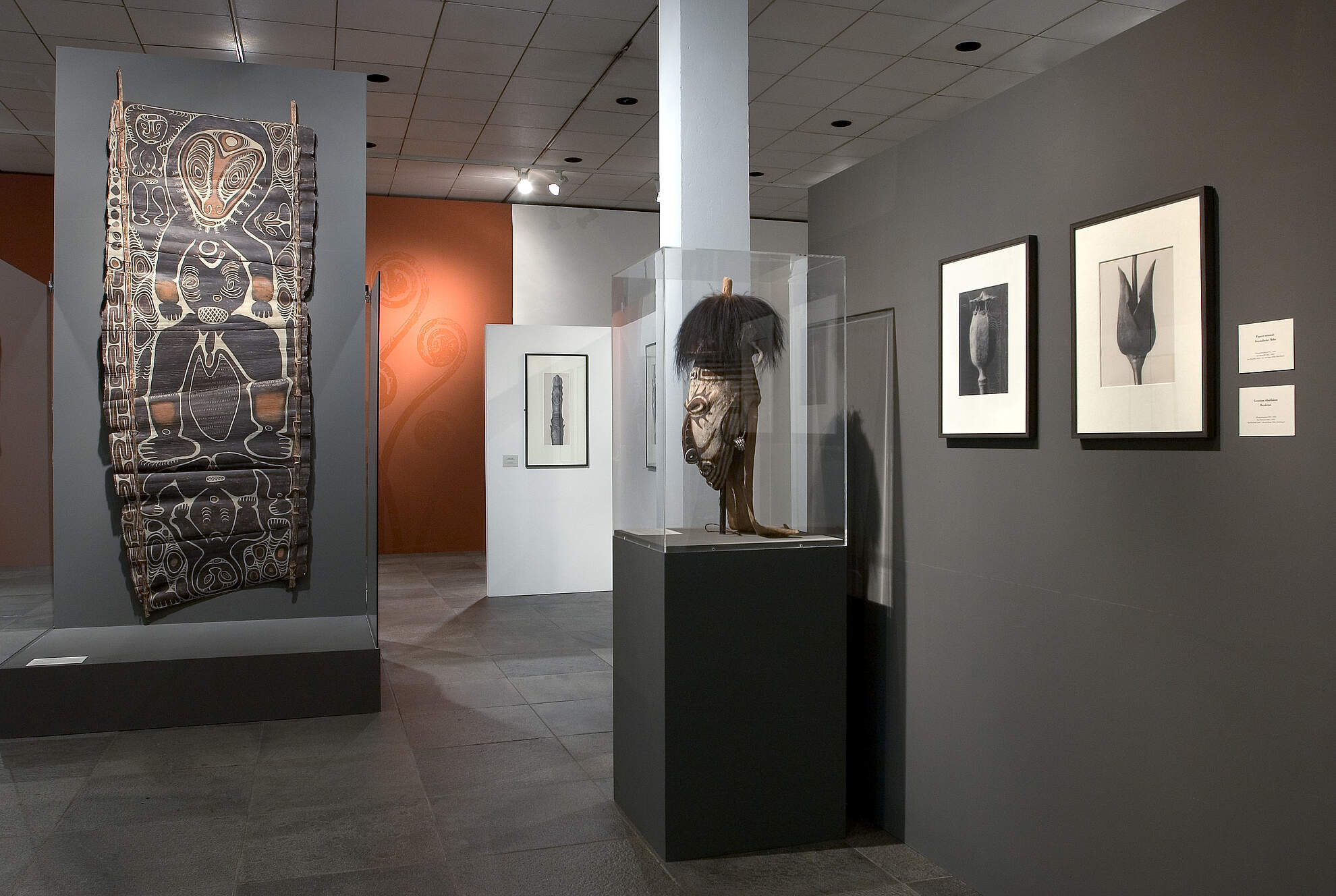
Urformen der Kunst
Rautenstrauch-Joest-Museum, Kulturen der Welt, Köln
Karl Blossfeldt's photographs and non-European art
An exhibition from 1926 in a new light
they unfold the same fascination
that took hold of the viewer
at the first presentation
in Berlin
Prof. Dr. Klaus Schneider
With a special exhibition, the Rautenstrauch-Joest-Museum in Cologne recalls a legendary presentation that was shown in the Nierendorf Gallery in Berlin in 1926. At that time, the sculptor, photographer and university professor Karl Blossfeldt presented his plant photographs, the "archetypes of art", to the public in dialogue with traditional art from Africa and Papua New Guinea. The Rautenstrauch-Joest-Museum now presents original photographs from the Cologne Foundation for Photography and Art Research Ann and Jürgen Wilde together with objects of non-European art from the museum's holdings. Photographs of greatly enlarged images of plants stand vis-à-vis the objects from Africa and Oceania. "In doing so, they unfold the same fascination that took hold of the viewer at the first presentation in Berlin," says museum director Prof. Dr. Klaus Schneider.
The valuable objects can only be seen during the exhibition period, as they will then be stored again in the depot until the completion of the new museum building on Neumarkt. The approach to the Berlin exhibition is a tribute to the publisher and art dealer whose passion for modern art made him one of the most important art dealers of the early 20th century alongside Paul Cassiere and Alfred Flechtheim. The exhibition, conceived and curated by the Galerie Aussereuropäischer Kunst Dierking, is also an appreciation of the work of Karl Blossfeldt, whose photographs still arouse great interest and admiration today. The juxtaposition of his almost abstract photographs with masterpieces of African and Oceanic art still creates an exciting dialogue that is unusual for the viewer. As one of the most important ethnological museums in Germany and the only one of its kind in North Rhine-Westphalia, the Rautenstrauch-Joest-Museum aims to use its valuable collection from Africa, America, Asia and Oceania to inspire understanding and respect for the lifeworlds and art forms of non-European cultures. The Ann and Jürgen Wilde Foundation for Photography and Art Studies was founded in Cologne in December 2001. Its purpose is to promote art and culture as well as science and research in connection with the Karl Blossfeldt and Albert Renger-Patzsch archives.
Urformen der Kunst
Rautenstrauch-Joest-Museum, Kulturen der Welt, Köln
they unfold the same fascination
that took hold of the viewer
at the first presentation
in Berlin
Prof. Dr. Klaus Schneider
Karl Blossfeldt's photographs and non-European art
An exhibition from 1926 in a new light
With a special exhibition, the Rautenstrauch-Joest-Museum in Cologne recalls a legendary presentation that was shown in the Nierendorf Gallery in Berlin in 1926. At that time, the sculptor, photographer and university professor Karl Blossfeldt presented his plant photographs, the "archetypes of art", to the public in dialogue with traditional art from Africa and Papua New Guinea. The Rautenstrauch-Joest-Museum now presents original photographs from the Cologne Foundation for Photography and Art Research Ann and Jürgen Wilde together with objects of non-European art from the museum's holdings. Photographs of greatly enlarged images of plants stand vis-à-vis the objects from Africa and Oceania. "In doing so, they unfold the same fascination that took hold of the viewer at the first presentation in Berlin," says museum director Prof. Dr. Klaus Schneider.
The valuable objects can only be seen during the exhibition period, as they will then be stored again in the depot until the completion of the new museum building on Neumarkt. The approach to the Berlin exhibition is a tribute to the publisher and art dealer whose passion for modern art made him one of the most important art dealers of the early 20th century alongside Paul Cassiere and Alfred Flechtheim. The exhibition, conceived and curated by the Galerie Aussereuropäischer Kunst Dierking, is also an appreciation of the work of Karl Blossfeldt, whose photographs still arouse great interest and admiration today. The juxtaposition of his almost abstract photographs with masterpieces of African and Oceanic art still creates an exciting dialogue that is unusual for the viewer. As one of the most important ethnological museums in Germany and the only one of its kind in North Rhine-Westphalia, the Rautenstrauch-Joest-Museum aims to use its valuable collection from Africa, America, Asia and Oceania to inspire understanding and respect for the lifeworlds and art forms of non-European cultures. The Ann and Jürgen Wilde Foundation for Photography and Art Studies was founded in Cologne in December 2001. Its purpose is to promote art and culture as well as science and research in connection with the Karl Blossfeldt and Albert Renger-Patzsch archives.
IMPRINT
© DIERKING 2025


